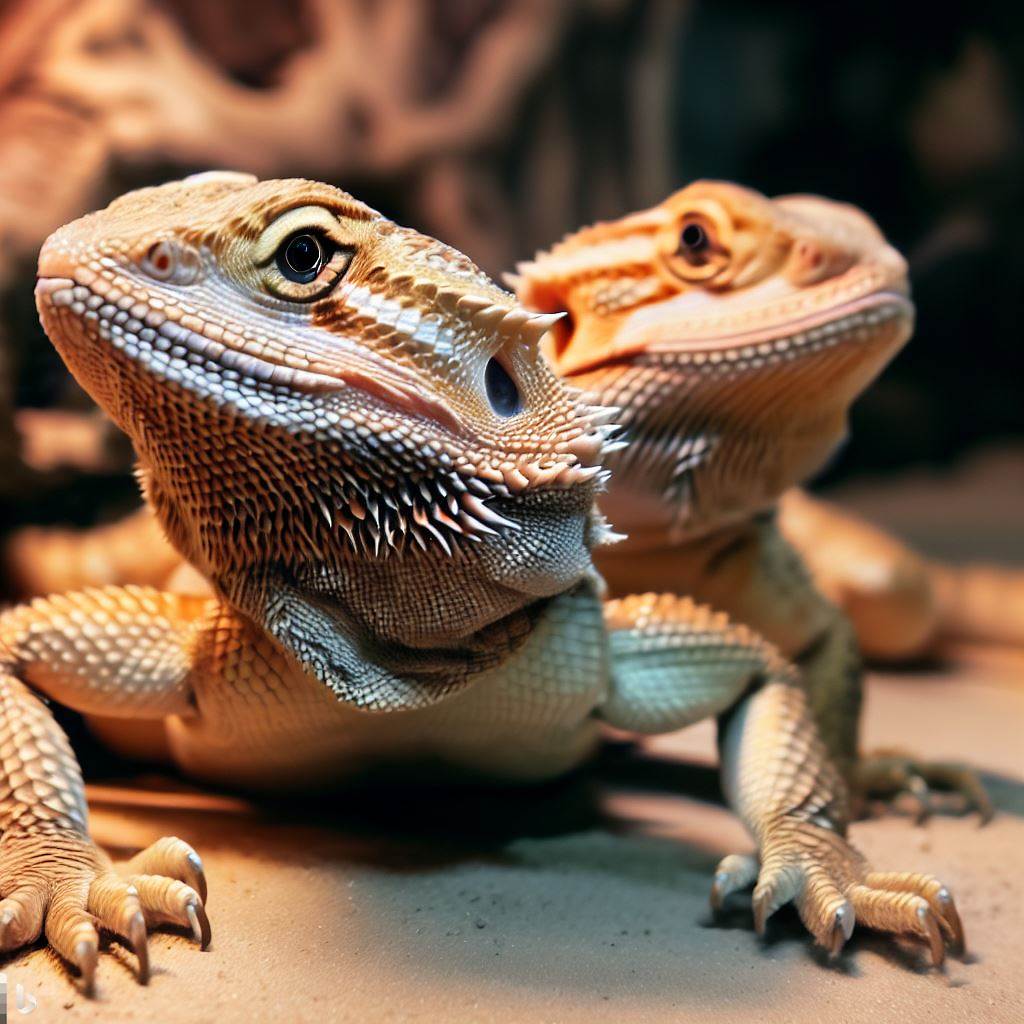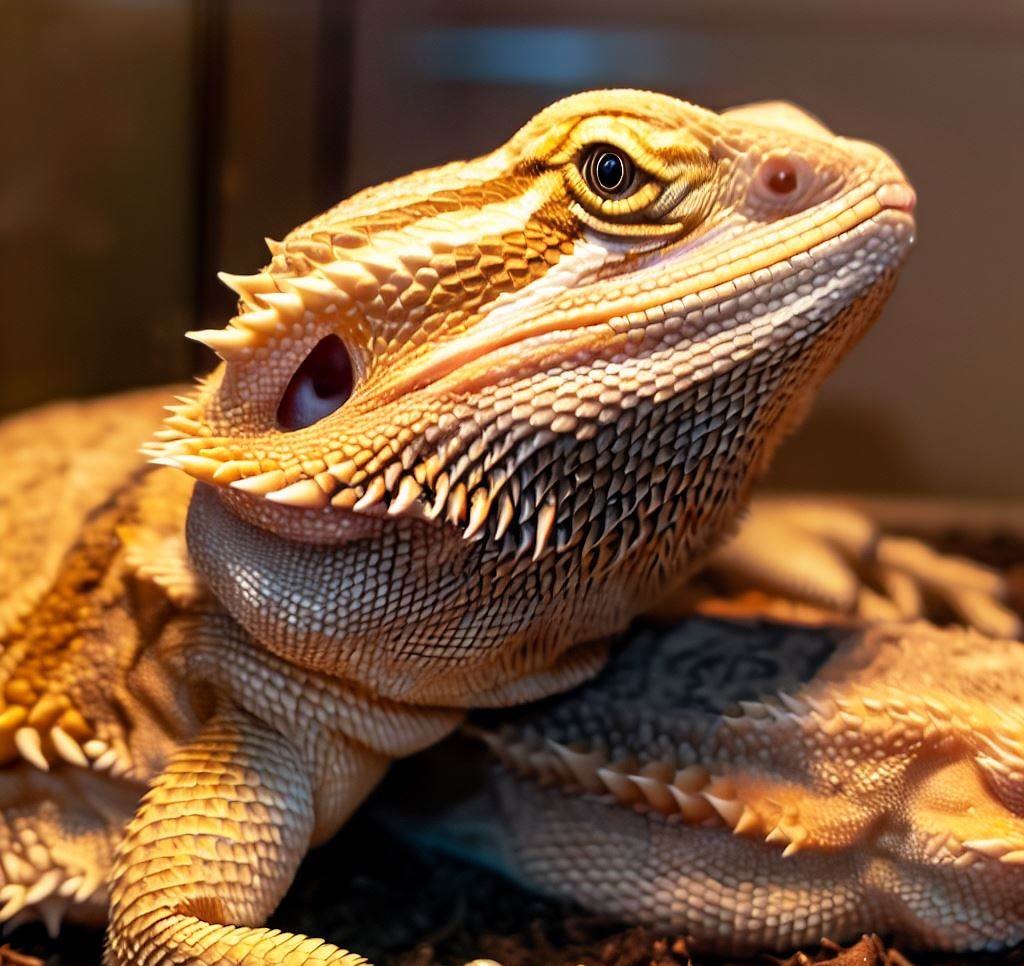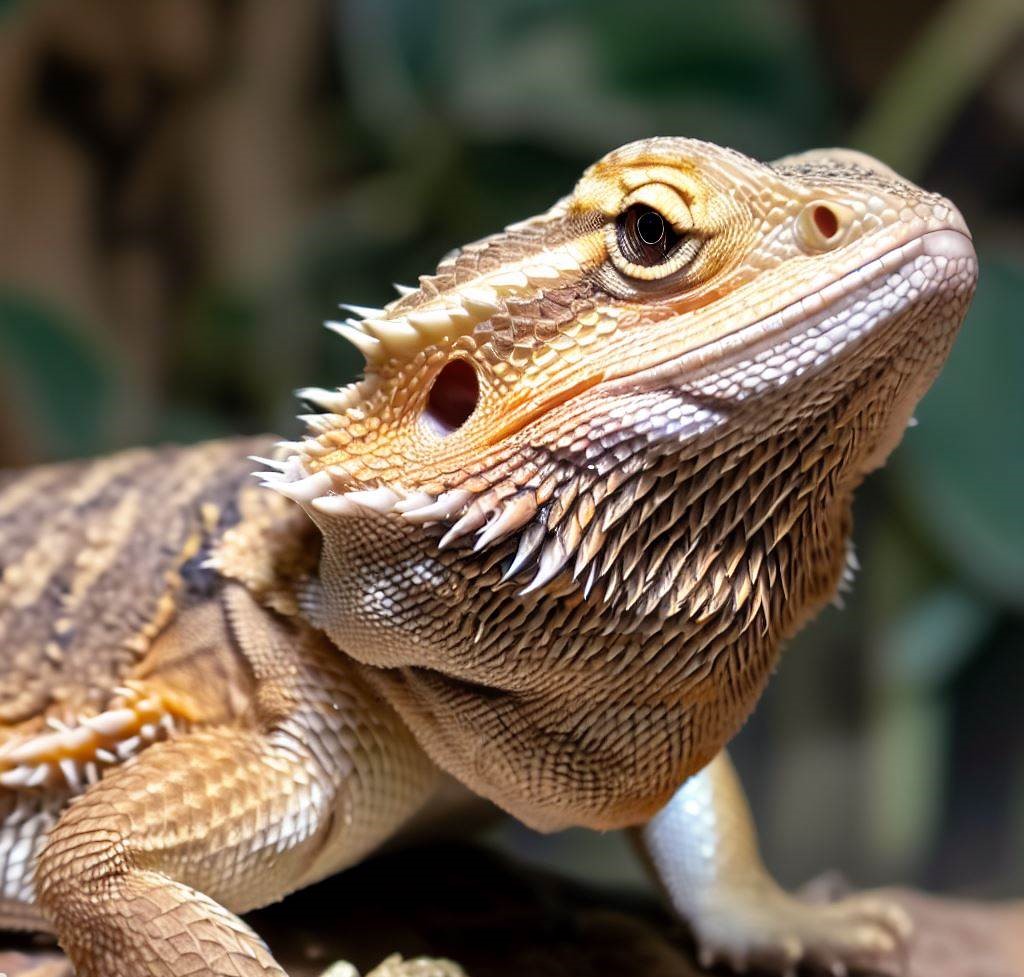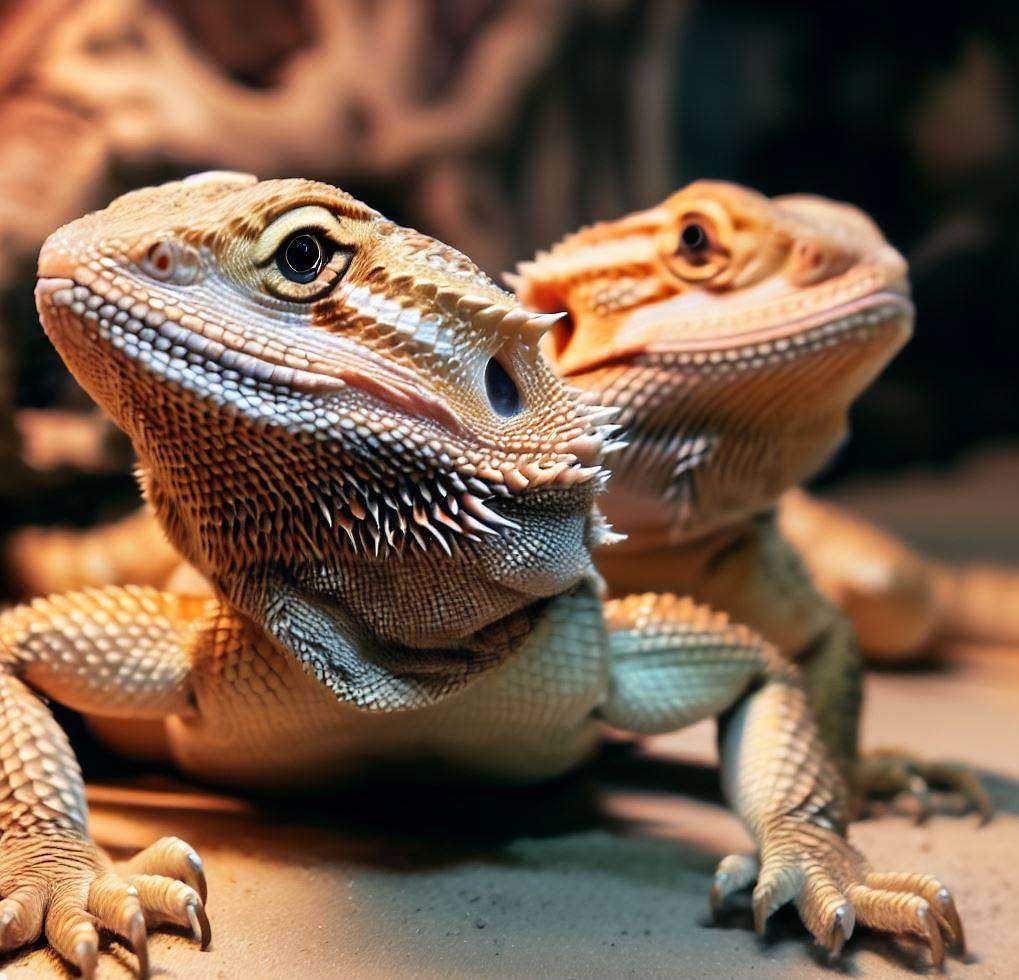As a reptile expert and lover, I have a particular soft spot for Silkback Bearded Dragons.
These extraordinary creatures, lovingly known as ‘silkies,’ have scaleless skin and irresistibly silky texture.
Nevertheless, taking care of these special dragons requires some extra TLC. Silkbacks aren’t for the faint of heart or inexperienced pet owners.
However, these dragons promise a truly unique and fulfilling companionship for those ready to embark on an extraordinary adventure.
In this guide, we’ll dive deep into the world of caring for silky bearded dragons, offering valuable insights into understanding their unique behaviors, temperament, and potential challenges that may arise in caring for them.
So grab a cup of coffee and let’s dive in!
Table of Contents
Overview Of Silkback (Silkie) Bearded Dragons

Silkback bearded dragons are unique in the bearded dragon world. They come from a unique breeding process involving two bearded dragons with a specific gene. This gives them their distinct scaleless, silky skin, unlike normal bearded dragons’ rough and spiky skin.
Characteristics Of The Silkie Species
Silkie bearded dragons have smooth, delicate skin that feels like silk, thus the name. Their skin is thin and can easily get hurt. It dries out quicker, so they need regular baths to stay hydrated.
In the wild, a bearded dragon’s spiky scales serve as a protective armor against predators. But silkies lack this natural defense. This means these scaleless bearded dragons need extra care and protection to live a long and healthy life.
Silky bearded dragons also have more vibrant colors. This is due to the lack of scales which often mute coloration in regular bearded dragons. Despite their striking look, their scaleless nature means they need special care.
Scaleless bearded dragons are also more prone to shedding issues. Regular baths and high humidity help them shed their skin correctly. But too much moisture can also lead to skin infections. It’s a fine line for silkie owners to walk.
Let’s Get To The Point: Are Silkback Bearded Dragons Good Pets?
Here’s a straight answer. Silkback bearded dragons can be good pets, but they’re not for everyone. They need a lot of attention, care, and frequent vet visits. This can be quite demanding for a first-time pet owner or someone not familiar with the needs of reptiles.
They are best suited for experienced owners who understand the needs of reptiles and are willing to put in the time and effort to care for them.
What Is The Origin Of Silkback (Silkie) Bearded Dragon Species?

Silkback bearded dragons are not a natural species. They emerged due to selective breeding efforts in captivity. Specifically, breeders paired two ‘leatherback’ bearded dragons, noted for their reduced scaling. This pairing produced offspring with no scales at all – the first ‘silkie’ bearded dragons.
It’s important to note that scaleless bearded dragons would not survive in the wild. They are a testament to the impact of human intervention on species development.
Care And Husbandry For Silkies
Caring for Silkback Bearded Dragons requires a unique approach due to their scaleless nature. You must consider their sensitive skin and specific needs in their habitat setup, diet, and handling.
In the following sections, we’ll guide you in providing the best care for your silkie.
Housing & Habitat
A silky bearded dragon’s home should be a spacious and comfortable enclosure. The recommended size for a single adult is a 120-gallon tank. This provides ample space for your dragon to move, bask, and hide.
The enclosure’s height is critical too. Silkie dragons are climbers, and they’ll appreciate a little vertical space.
Temperature And UVB Lighting Requirements
Silkie bearded dragons need to thermoregulate their body temperature. So, provide a basking spot around 100°F and a cooler area about 80°F. UVB lighting is crucial for their health.
It helps in calcium absorption and prevents metabolic bone disease. And ensure your scaleless bearded dragon gets 12-14 hours of UVB exposure daily.
Humidity Management
Unlike other reptiles, silk bearded dragons need higher humidity levels. Aim for a consistent 35-40% humidity. Regular misting helps to achieve this. Remember, scaleless bearded dragons lack scales and are prone to dehydration.
So, maintain these humidity levels to keep your pet healthy.
Enclosure Setup And Substrate
Silkback bearded dragons need an environment that resembles their native arid habitat. Use newspaper or reptile carpet as substrate, avoiding sand. Include many hiding spots, climbing structures, and a basking platform.
Make sure everything is secure. You don’t want any decor to topple over and injure your dragon.
Diet And Nutrition
Silky bearded dragons are omnivorous. They enjoy a diverse diet of leafy greens, vegetables, and insects. Young silkie bearded dragons need more protein, so feed them daily. Adults need a diet rich in vegetables and greens, with insects offered every other day. Remember calcium and vitamin D3 supplements for their health.
Shedding And Skin Care
Shedding can be tricky for silkies because of their unique skin. When your dragon starts to shed, mist it gently with warm water. This can ease the shedding process.
Keep an eye out for any unshed skin, as it can cause issues if not removed.
Handling And Socialization
Generally, you can handle scaleless bearded dragons as they are sociable. But always be gentle and avoid rough handling. Their skin is delicate and prone to damage.
Over time, consistent, calm handling will help your dragon become more used to human interaction. Remember, patience is vital.
Special Considerations For Silkback Bearded Dragons

The silky bearded dragon, unique in its scaleless appearance, requires special attention. Their distinctive trait, the lack of scales, means their health needs diverge from their scaled counterparts.
Many Health Concerns
Scaleless bearded dragons face an increased vulnerability to various health issues. Dry skin and shedding problems are common. They can also suffer from scratches and cuts as their skin lacks protective scales.
A stress-free environment and regular veterinary check-ups are essential to maintain their health. Skin conditions can become severe if not monitored carefully.
Fungal and bacterial infections are more common in silk backs than in other bearded dragons. Their delicate skin can also get sunburned under intense UVB lighting, necessitating careful exposure monitoring.
Breeding & Reproduction
Breeding silky bearded dragons is a delicate process. It involves a silkie and another bearded dragon, usually a leatherback. The outcome, in terms of the offspring’s scale condition, varies. Some may have partial scales, while others may be completely scaleless, like the silkie parent.
It’s essential to note that breeding silky bearded dragons is often discouraged due to the associated health issues. Ethical considerations also come into play due to the challenges the offspring face. So, it’s crucial to fully understand these considerations before venturing into the breeding process.
Each bearded silkie dragon is unique and deserving of dedicated care and attention. Understanding their unique needs is the first step to providing them with a comfortable and healthy life.
Mythbusting: Is the Production of Silkback Bearded Dragons Ethical and Beneficial?
In the reptile world, the silkback bearded dragon is a contentious topic. With their unique scaleless skin, they’re a distinct breed.
Yet, these creatures’ production and care raise ethical and health-related concerns.
Primarily- Cons
Ethical Considerations
There’s an ongoing debate about the ethics of breeding silkback bearded dragons. Achieving an utterly scaleless bearded dragon can involve breeding, which poses risks. Also, silk backs can suffer from various health issues due to their lack of scales.
Health Concerns
Silkback bearded dragons are prone to health complications, from skin issues to increased sensitivity to environmental factors. These health problems often need regular and intensive care, as well as frequent visits to the vet.
Specialized Care
Their special needs extend to daily care. Silkbacks need a carefully controlled environment, a special diet, and gentler handling than scaled dragons. They need a meticulous and committed caregiver, making them unsuitable pets for many.
Controversies And Criticism
Some view breeding silkbacks as exploiting animals for aesthetics at the cost of their health. Several reptile lover groups strongly criticize and discourage the breeding of scaleless bearded dragons.
Pros – Only
Aesthetic Appeal
The one notable pro is the unique aesthetic of the silkback bearded dragon. Their smooth, scaleless skin showcases their vivid colors and patterns in a different light. This distinctive beauty attracts some collectors and enthusiasts despite the controversies.
The debate about the production of silky bearded dragons is complex. Both prospective owners and breeders need to understand both sides of the argument. Careful consideration and research can help ensure that the welfare of these unique creatures remains at the forefront of any decision.
Conclusion
Silk back bearded dragons are truly mesmerizing creatures that add a touch of elegance to the reptile world. But hold on tight because their unique beauty comes with some special considerations!
But don’t you worry! If you’re up for an exciting adventure and ready to embrace the commitment, caring for a silkie can be an incredibly fulfilling experience. So, if you’re prepared to embark on this unique journey with these fascinating creatures, get ready to be rewarded with the joy of witnessing their beauty and vitality firsthand.
With proper care and attention, you’ll forge a deep bond with your silkie bearded dragon, bringing you endless joy and creating unforgettable memories. It’s time to dive into the beautiful world of silk back bearded dragons!
FAQs
Can scaleless bearded dragons live with other bearded dragons?
In general, it’s not recommended to house different types of bearded dragons together, including silkie bearded dragons. Separately housing them helps prevent potential aggression, breeding issues, or the spread of disease.
Can a silkie bearded dragon mate with a regular bearded dragon?
Yes, a silkie bearded dragon can mate with a regular bearded dragon. But, it’s crucial to consider the potential genetic outcomes and health risks for the offspring.
Are Silky Bearded Dragons available in pet stores?
Availability can vary depending on the location. Silkbacks are less common than normal bearded dragons due to their complex care needs and the controversy surrounding their breeding. Find reputable breeders if you are considering adding a silkie to your home.

